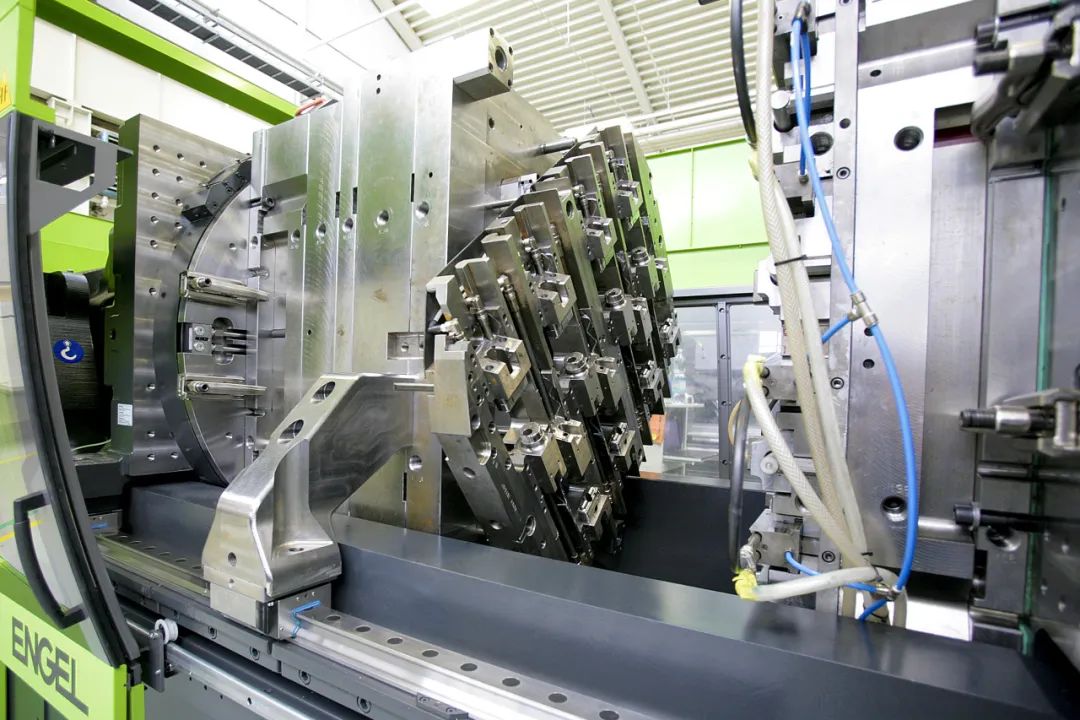ENGEL Tie-Bar-Less Technology 35th Anniversary: Forging the Path of Innovation and Evolution in the Injection Molding Industry
In 1989, when ENGEL first introduced the tie-bar-less injection molding machine at the K fair in Düsseldorf, the industry’s reactions were mixed: there were technical praises as well as public doubts. At that time, few could foresee that this “revolutionary” design would become one of the successful technologies in the field of injection molding machinery. Thirty-five years later, ENGEL has delivered over85,000 unitsThe model without tie bars, and continuously driving innovation with a focus on customer needs. At the K 2025 exhibition this year, ENGEL willGlobal Debut of the New Generation Fully Electric Tie-bar-less Injection Molding Machine。
The inspiration for the development of the tie-bar-less technology stemmed from practical needs: a customer complained to ENGEL that the traditional four tie-bar structure severely interferes with mold installation, and that changing molds would be much more convenient without the obstruction of tie-bars. Based on this, the ENGEL development team began researching whether it was possible to completely eliminate the tie-bars in the clamping unit of injection molding machines. This seemingly simple idea led to a significant breakthrough in mechanical design—previously, regardless of machine size or application scenario, "injection molding machines must be equipped with four tie-bars" was considered an unshakeable engineering principle. The birth of the tie-bar-less clamping unit marks a complete revolution in design philosophy.

The first rodless frame in the laboratory. This revolutionary concept has achieved global success by delivering significant customer value.
Technical Breakthrough
ENGEL solved the problem of asymmetric force on C-frame structures through an innovative joint principle: replacing traditional tie rod guidance with a robust frame and utilizing a freely moving bending rod joint between the moving platen and the clamping piston (later patented as the Force Divider system). This Flex-Link flexible connecting element ensures absolute parallelism of the mold parting surfaces, while simultaneously achieving uniform clamping force distribution across all cavities of the platen and the entire mold surface. The new model, born from this innovation, is not only renowned for its technical advantages but also opens up new dimensions in mold design. The first complete production line was launched in 1990, and in 2000, the series was officially named "victory."
The evolution of fourth-generation technology and the accumulation of experience
From manually lubricated sliding bearings in prototype machines to today's Flex-Link systems with decentralized force application, ENGEL continues to improve the joint system of tie-bar-less machines while expanding the product line and introducing new drive technologies.
The current ENGEL tie-barless machine models cover three major series.
Hydraulic Victory Series
Suitable for versatile industrial injection molding.
Hybrid E-Victory Series
The electric injection unit meets the requirements for high-precision parts.
All-electric Victory Electric series
Designed for demanding applications such as large-volume precision components.
All three have the inherent advantages of a tie-bar-less clamping unit: larger mold installation space, quick mold change, user-friendly operation interface, and flexible automation integration. The open template design also enables the application of large and complex molds on machines with lower clamping force, significantly reducing investment costs.

The ENGEL victory series' tie-bar-less technology provides ample space for large molds and automation systems, and the large platens often eliminate the need to purchase higher tonnage models.
Adhering to principles leads to success.
ENGEL's unique position in the tie-bar-less field is not only due to its first-mover advantage in technology but also benefits from continuous iteration and refinement of its patent layout. Its design value is particularly evident in multi-cavity mold scenarios with small projected areas — compared to traditional models, it can reduce energy consumption by up to 30%, while also decreasing equipment size and procurement costs.
Energy Efficiency Innovation Milestone
The introduction of ecodrive servo-hydraulic drive technology reduces the energy consumption of hydraulic machines to the level of electric machines, making it an ideal solution for high energy efficiency requirements when combined with a tie-bar-less design. Currently, all ENGEL hydraulic and hybrid models are equipped with the ecodrive system as standard.
Facing the Future: Modular, Integrated, Sustainable
The key to the enduring vitality of the tie-bar-less technology over 35 years lies in its outstanding adaptability. Whether for cleanroom applications, multi-component processes, or highly automated production units, ENGEL models can meet demands through modular configuration.
K 2025 Outlook: A New Era of Electric Technology
The current K Exhibition will debut a new generation of electric tie-bar-less models, focusing on the added value brought by design upgrades, continuing the 35-year tradition of "customer questions driving innovation."
【Copyright and Disclaimer】The above information is collected and organized by PlastMatch. The copyright belongs to the original author. This article is reprinted for the purpose of providing more information, and it does not imply that PlastMatch endorses the views expressed in the article or guarantees its accuracy. If there are any errors in the source attribution or if your legitimate rights have been infringed, please contact us, and we will promptly correct or remove the content. If other media, websites, or individuals use the aforementioned content, they must clearly indicate the original source and origin of the work and assume legal responsibility on their own.
Most Popular
-

EVA Morning Prices on September 12: Most of the Market Holds Steady, Highest Rise of 50 Yuan
-

Vynova's UK Chlor-Alkali Business Enters Bankruptcy Administration!
-

[PET Weekly Outlook] Polyester Bottle Chips Expected to Oscillate and Warm Up with Costs Today
-

Nissan Cuts Production of New Leaf EV in Half Due to Battery Shortage
-

Case Study | Clariant AddWorks™ Additives Solve Plastic Yellowing Problem






